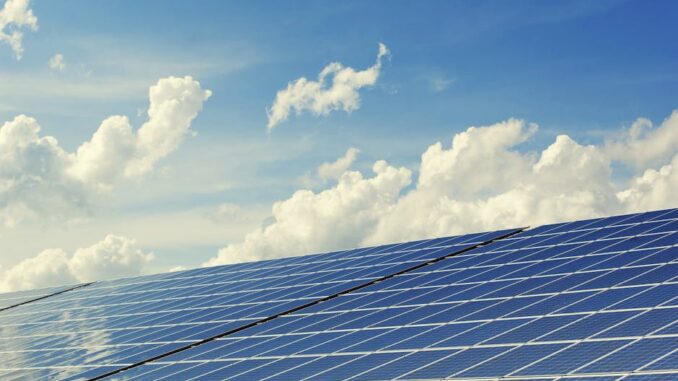
Summary
This article explores five of the world’s most energy-efficient buildings, providing actionable steps for builders to enhance energy efficiency in new constructions. From optimized HVAC systems and renewable energy sources to smart building technologies and buyer education, the article offers a comprehensive guide to achieving remarkable energy savings. By following these tips, builders can create sustainable structures that minimize environmental impact and maximize long-term cost savings.
Successful low-energy building design hinges on careful planning. Focus360 Energy can help.
** Main Story**
Building a Greener Future: Examples and Tips for Energy Efficiency
Let’s face it, energy efficiency isn’t just a buzzword these days; it’s a necessity. I mean, buildings guzzle down a huge chunk of the world’s energy, so sustainable construction? Absolutely crucial for the future of our planet. What if we could cut that consumption significantly? This article is going to show you five incredible examples of energy-efficient buildings and give you a step-by-step guide so you, as a builder, can get similar results.
Step 1: Learn from the Best (Seriously!)
There are some seriously impressive buildings out there that are practically shining examples of what’s possible. Just take a look at these:
- The Edge, Amsterdam: This building’s smart. Really smart. It uses occupancy sensors, optimized HVAC, and renewable energy like it’s going out of style, achieving incredible energy savings. And get this, it even has a sustainability score of 98.36%! Someone give them an award.
- Powerhouse Kjørbo, Oslo: Talk about impressive! This building cut its energy consumption by a massive 90% through clever design and recycled materials. That’s not just energy efficiency, that’s wizardry.
- Empire State Building, New York: Who would’ve thought? This iconic skyscraper underwent a massive renovation, including swapping out all 6,514 windows for energy-efficient ones. The result? Massive annual energy savings. I remember visiting the Empire State Building, and thinking how much money they must be saving from this alone!
- International Renewable Energy Agency Headquarters, Abu Dhabi: A total testament to sustainable design incorporating cutting-edge technologies, and practices.
- Bullitt Center, Seattle: This place is often called the “greenest commercial building in the world”, and it pretty much lives up to the name. It generates its own electricity, manages its own water, and even composts human waste. How’s that for self-sufficient?
Step 2: Optimizing Building Systems
So, a building’s energy efficiency, well, it practically lives or dies based on its core systems. Here’s the lowdown:
- HVAC Systems: Think multi-speed HVAC systems, low-E windows, and some proper insulation, like spray foam. Smart thermostats that adjust temperatures? Definitely worth considering. Plus, don’t forget regular maintenance, seriously that is so important.
- Lighting: Switch to LEDs and control them with occupancy sensors. LEDs use way less energy and last longer, meaning less maintenance. It’s a win-win, or at least, I think so.
- Insulation and Sealing: This is crucial! A well-insulated and airtight building is the holy grail. Use high-performance insulation, especially in exterior walls, and make sure everything is sealed up tight around windows and doors. If you want to go the extra mile, go with triple-glazed windows.
- Ventilation: Heat recovery ventilators. Get ’em. They keep air quality high while minimizing energy loss by using outgoing air to heat or cool incoming air. Genius!
Step 3: Renewable Energy and Smart Tech: A Dynamic Duo
Want to really crank up the energy efficiency? Then bring on the renewable energy and smart technologies.
- Renewable Energy: Solar panels, wind turbines, you name it. Generating clean energy on-site cuts reliance on traditional power grids and saves you money. I am always in favour of that.
- Smart Building Technologies: Implement smart control systems that monitor energy consumption in real-time. Use that data to optimize energy use and find ways to improve. It’s like having a personal energy efficiency consultant living inside your building.
Step 4: Don’t Forget Bioclimatic Architecture
Bioclimatic architecture is about designing a building that works with the local climate, not against it.
- Passive Design Strategies: Utilize passive heating and cooling. Think about solar orientation and natural ventilation to minimize the need for mechanical systems. It is like working with nature to find the best solution.
- Building Materials: Choose materials that offer optimal thermal performance. Thick concrete or brick walls can act as natural insulators. It is important to remember that every building is different, and you need to match your solution to the enviroment!
Step 5: Educate Those Home Buyers!
Educating buyers about the energy-efficient features of their potential new building is a must. If you aren’t transparent, how can they ever make the right choice?
- Highlight Key Features: Walk them through the benefits of all those energy-efficient systems, appliances, and materials. Give them the knowledge to make an informed decision and appreciate the value of your sustainable design.
- Provide Operational Guidance: Give them tips on how to maximize energy savings. It can be something as simple as adjusting thermostat settings and using natural light. Seriously, you’d be surprised how many people don’t think about this stuff.
By following these steps, builders can create buildings that not only benefit the environment but also offer long-term savings and comfort. The field is constantly evolving, so staying informed is critical. Consider this your guide for building a greener future!


The examples of energy-efficient buildings are impressive! Beyond new construction, what strategies can be effectively implemented to retrofit existing buildings, particularly those with historical significance or unique architectural constraints?
That’s a great point! Retrofitting historic buildings requires a delicate balance. Solutions like internal wall insulation, secondary glazing (preserving original windows), and discreet solar panel installations can significantly improve efficiency without compromising architectural integrity. The key is finding innovative, reversible methods that respect the building’s heritage. What are your thoughts?
Editor: FocusNews.Uk
Thank you to our Sponsor Focus 360 Energy